Healing unfolds as a journey of aligning body, mind, energy, and consciousness, where disease is not merely a malfunction but a signal of deeper imbalance and untapped potential. Drawing from the quantum view, health emerges when individuals awaken their inner capacity to choose creativity, dissolve limiting patterns, and harmonize with the ground of being. Integrative medicine—bridging allopathic precision with ancient wisdom and consciousness-based practices—offers a roadmap from survival to transformation, from curing symptoms to realizing wholeness. By embracing daily practices of awareness, compassion, and intentional living, both individuals and practitioners can co-create a future where medicine evolves into a consciousness-centered revolution for personal and collective well-being.

The Quantum Doctor: Consciousness, Physics, and the Future of Healing
I. Introduction: A New Medicine for a New World
We stand at a turning point in the story of human health. Modern medicine, with its dazzling technological breakthroughs and life-saving interventions, has extended our lifespans and cured diseases that once decimated populations. Yet, paradoxically, the same system often leaves patients feeling unseen, fragmented, and trapped in cycles of chronic illness. The more we know about the mechanics of the body, the less certain we seem about the deeper questions of health: What makes us whole? What heals us at the root, beyond mere symptom control?
The concept of the Quantum Doctor, championed by physicist Dr. Amit Goswami and echoed by other pioneers, invites us to confront these questions head-on. It challenges the prevailing assumption that human beings are merely biochemical machines and proposes a more radical thesis: that consciousness, not matter, is the foundation of health and healing. In this view, medicine is not simply about fixing parts of the body but about restoring harmony across multiple layers of existence—physical, energetic, mental, and spiritual.
Intended Audience
This vision is not limited to scientists or mystics alone. It speaks to a wide circle of seekers and practitioners:
- Health practitioners, whether allopathic doctors rooted in biomedicine or alternative healers working with energy, herbs, or lifestyle interventions.
- Philosophers and spiritual seekers, who are curious about the convergence of cutting-edge physics and timeless wisdom traditions.
- Patients, weary of the limitations of conventional care, who yearn for approaches that honor both their biology and their being.
- Policy makers and educators, who influence the design of future healthcare systems and must now wrestle with the ethical, scientific, and cultural implications of this paradigm.
Purpose of the Article
The article you are about to read is both a map and a critique. It seeks to:
- Explain the paradigm of the Quantum Doctor as envisioned by Goswami and others who argue for consciousness-centered healing.
- Critically examine the claims, exploring both their profound possibilities and the controversies they provoke.
- Inspire readers to rethink health as more than the mere absence of disease, and instead as the alignment of body, mind, and spirit in service of wholeness and growth.
Why Now
The urgency of this re-examination cannot be overstated.
- Growing disillusionment with reductionist biomedicine: Patients often feel treated as “cases” or “lab results,” rather than as complex beings with emotions, energies, and life stories. Despite immense progress, medicine still struggles to address the epidemic of lifestyle-related and stress-induced conditions.
- Increasing acceptance of integrative and preventive approaches: Practices like yoga, meditation, Ayurveda, and mindfulness are no longer fringe but mainstream. Their widespread adoption reflects a hunger for health systems that do more than prescribe pills—they empower transformation.
- Rising chronic illnesses, mental health crises, and spiritual void in healthcare: Depression, anxiety, autoimmune conditions, and burnout are rising at alarming rates. Patients are not only asking for treatments—they are asking for meaning.
In such a climate, the Quantum Doctor is more than an intellectual curiosity. It is a call to reimagine medicine itself, not as a fragmented enterprise of specialists and silos, but as a holistic field rooted in the interplay of consciousness and matter. Whether one embraces or critiques this model, engaging with it opens the door to a vital dialogue: What kind of medicine do we need for a new world, and for a humanity that is not just surviving—but seeking to thrive?
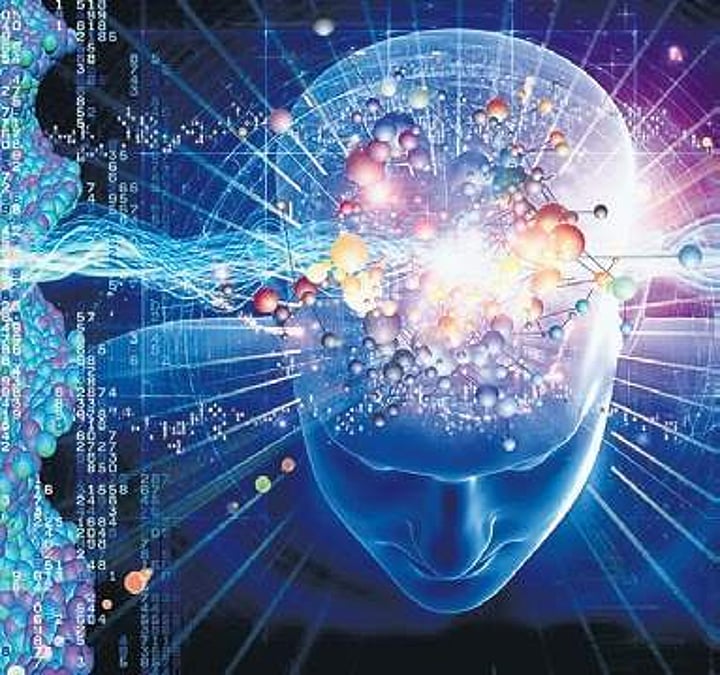
II. The Present Crisis in Healthcare
If modern medicine were a symphony, it would be technically brilliant yet strangely incomplete—precise in execution, but missing the depth and resonance that stirs the human spirit. The current healthcare landscape is caught in a paradox: never before have we had so many tools, machines, and drugs to fight disease, and yet never before have so many people felt chronically unwell, mentally strained, and spiritually disconnected. To understand why, we must confront the crisis at the heart of the system.
Reductionist Blind Spots
The dominant model of healthcare, grounded in materialist science, has historically served us well. Antibiotics, vaccines, surgical techniques, and advanced diagnostics have saved millions of lives. Yet this same model suffers from reductionist blind spots:
- Treating symptoms vs. addressing root causes: A patient with recurring migraines is often prescribed stronger painkillers rather than being guided to explore underlying triggers—stress, emotional trauma, dietary imbalance, or even unresolved grief. The emphasis on short-term fixes often ignores the systemic roots of disease.
- Neglect of patient individuality and consciousness: In busy hospitals, patients can feel reduced to charts and numbers. Their inner life—their fears, beliefs, and stories—rarely enters the diagnostic frame, though these often shape the trajectory of illness and recovery.
The Rise of Chronic and Lifestyle Diseases
The 20th century saw medicine’s triumph over infectious diseases, but the 21st has unveiled a different enemy: chronic, lifestyle-related, and stress-driven illnesses.
- Diabetes, cancer, cardiovascular disease, and autoimmune disorders dominate today’s health burden. These are not sudden infections but slow-burning conditions, influenced by lifestyle, environment, and mindset.
- Mental health crises—depression, anxiety, burnout—are rising in every demographic, especially in younger populations navigating a world of relentless pressures.
- The materialist approach struggles Pills can stabilize blood sugar or ease depression, but they cannot restore purpose, heal emotional wounds, or realign consciousness. In focusing almost exclusively on biochemistry, we often miss the deeper forces shaping health.
Parallel Growth of Alternative Medicine
As dissatisfaction with mainstream approaches grows, many turn to alternative and traditional systems of medicine:
- Ayurveda and Traditional Chinese Medicine (TCM) emphasize balance, prevention, and the flow of vital energy (prana or qi).
- Naturopathy focuses on supporting the body’s innate healing capacity through natural remedies and lifestyle adjustments.
- Energy healing practices such as Reiki, pranic healing, or acupuncture claim to work at subtler layers of human existence.
These approaches resonate with patients because they treat them as whole beings—body, mind, and spirit. Yet they face challenges: - Lack of large-scale scientific validation, due in part to the difficulty of measuring subjective or energetic phenomena with reductionist tools.
- Frequent dismissal as “pseudoscience” by the mainstream, which often undermines genuine insights embedded in ancient traditions.
Conclusion of Section
The result is a fragmented healthcare landscape. On one side, conventional medicine is precise but incomplete; on the other, alternative systems are holistic but often sidelined. Patients, caught in the middle, oscillate between pills and practices, hoping to piece together a path to healing. This is where the idea of the Quantum Doctor emerges—not to reject either approach, but to synthesize them into a model that honors science while embracing consciousness. It asks a radical but timely question: What if healing requires not only the repair of molecules but also the alignment of meaning, energy, and awareness?
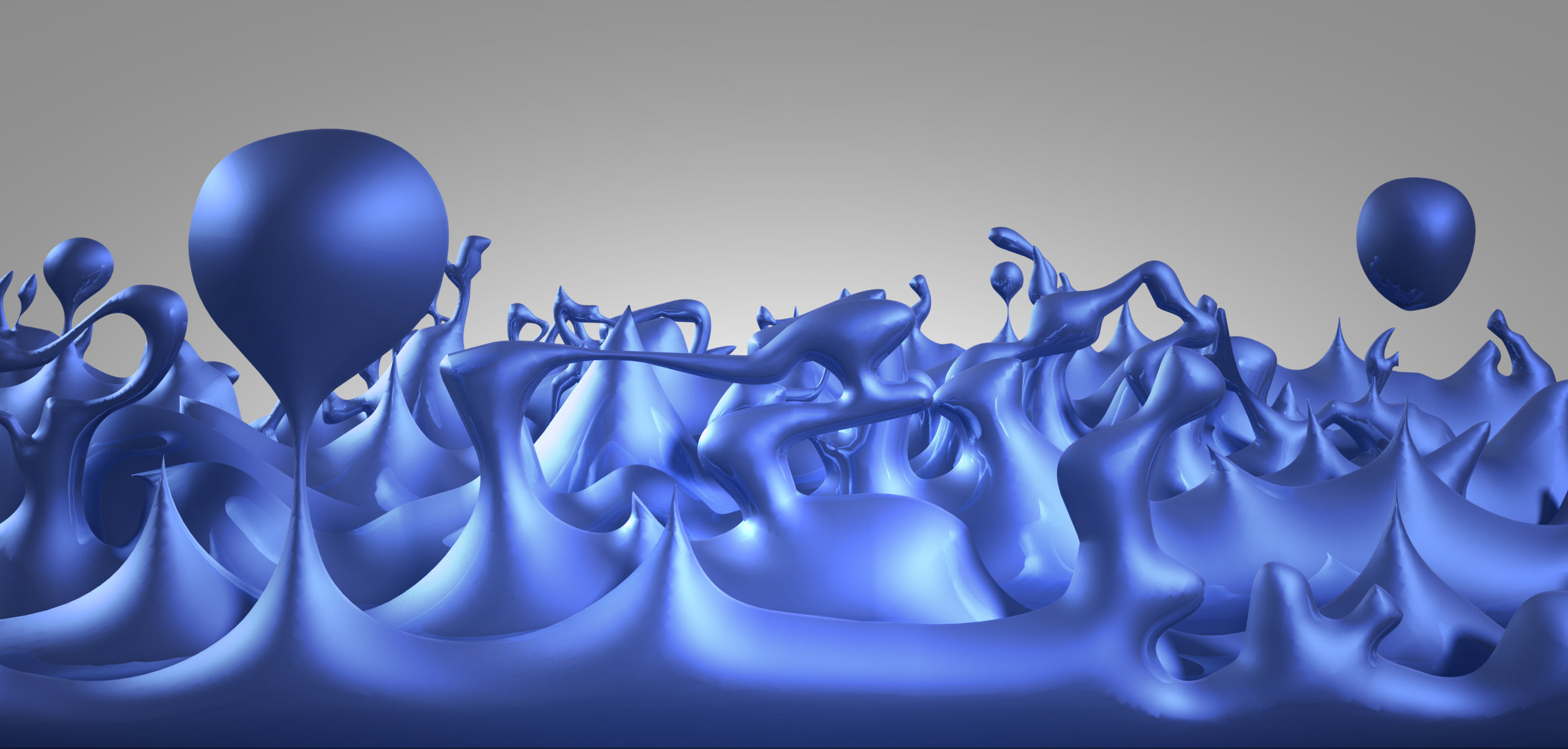
III. Quantum Science as the New Paradigm of Healing
Medicine, like all human knowledge, is built upon the philosophical scaffolding of science. For centuries, that scaffolding has been Newtonian—a worldview that sees the universe as a giant machine, governed by laws of cause and effect, with bodies as mechanical objects subject to repair. This model has been spectacularly successful for engineering, chemistry, and surgery. Yet, as we move deeper into the complexity of chronic illness, consciousness, and subtle human experience, cracks appear in its foundation. The quantum worldview offers a profound alternative—one that sees health not only in terms of matter but also in terms of possibility, energy, and meaning.
From Newtonian to Quantum Worldview
- Newtonian Medicine: The Body as Machine
Under classical mechanics, the human body is regarded as a complex but ultimately deterministic system. Every disease is presumed to have a material cause, every effect a physical antecedent. This logic produces remarkable clarity in treating broken bones, infections, or mechanical failures of organs. Yet it falters when dealing with diseases of meaning and imbalance—autoimmune disorders, depression, or unexplained healing phenomena. - Quantum Medicine: Consciousness-Driven and Holistic
Quantum physics, by contrast, disrupts the deterministic order. At its heart lies probability, uncertainty, and the profound role of the observer. Applied to medicine, this suggests that the body is not a passive machine but an open field of potentialities, where consciousness plays a decisive role in shaping health outcomes. Health is no longer only about correcting chemical imbalances—it becomes about aligning body, energy, and awareness into harmony.
Core Quantum Principles Relevant to Medicine
- Nonlocality → Healing beyond space and time
Quantum entanglement suggests that particles remain connected across vast distances. In the healing context, this principle offers a framework for understanding phenomena such as prayer, distant healing, or the inexplicable bond between healer and patient. While controversial, countless anecdotal accounts point toward a mysterious interconnectedness that conventional medicine cannot explain. - Wave–Particle Duality → Humans as matter and energy
At the subatomic level, entities behave both as particles (material) and waves (energetic, probabilistic). Human beings, then, are not merely biochemical objects but living patterns of energy and possibility. Modalities such as acupuncture, Reiki, and yoga, long dismissed as metaphoric, may gain legitimacy when seen through this dual lens. - Observer Effect → Consciousness shapes biology
In quantum experiments, the act of observation collapses probabilities into measurable reality. Translated into medicine, this suggests that intention, belief, and awareness are not passive bystanders but active participants in healing. The placebo effect—a patient’s belief producing measurable physiological change—becomes not a nuisance but a clue to the power of consciousness.
Consciousness as Primary Reality
At the deepest level, the Quantum Doctor posits that consciousness is not a by-product of matter but the ground of being itself. Here lies the sharpest break from materialism:
- Materialism argues that the brain produces consciousness, much as a lightbulb produces light.
- Idealism, embraced by thinkers like Goswami, claims the reverse: consciousness generates matter, and the brain is but an instrument through which awareness expresses itself.
If consciousness is indeed primary, then illness is not simply a molecular malfunction. It is a disturbance in consciousness itself, cascading through energy, mind, and eventually into the physical body. Healing, then, requires not only drugs or surgery but also a reorientation of awareness—a collapse of new possibilities into being.
Closing Thought of Section
This shift from a Newtonian to a quantum paradigm is not about discarding science but about expanding it. It reframes medicine from a mechanical enterprise into a dance of consciousness and matter. The implications are vast: from validating subtle healing traditions to redefining the role of patient awareness, the Quantum Doctor calls for nothing less than a revolution in how we understand health, illness, and the very fabric of life.
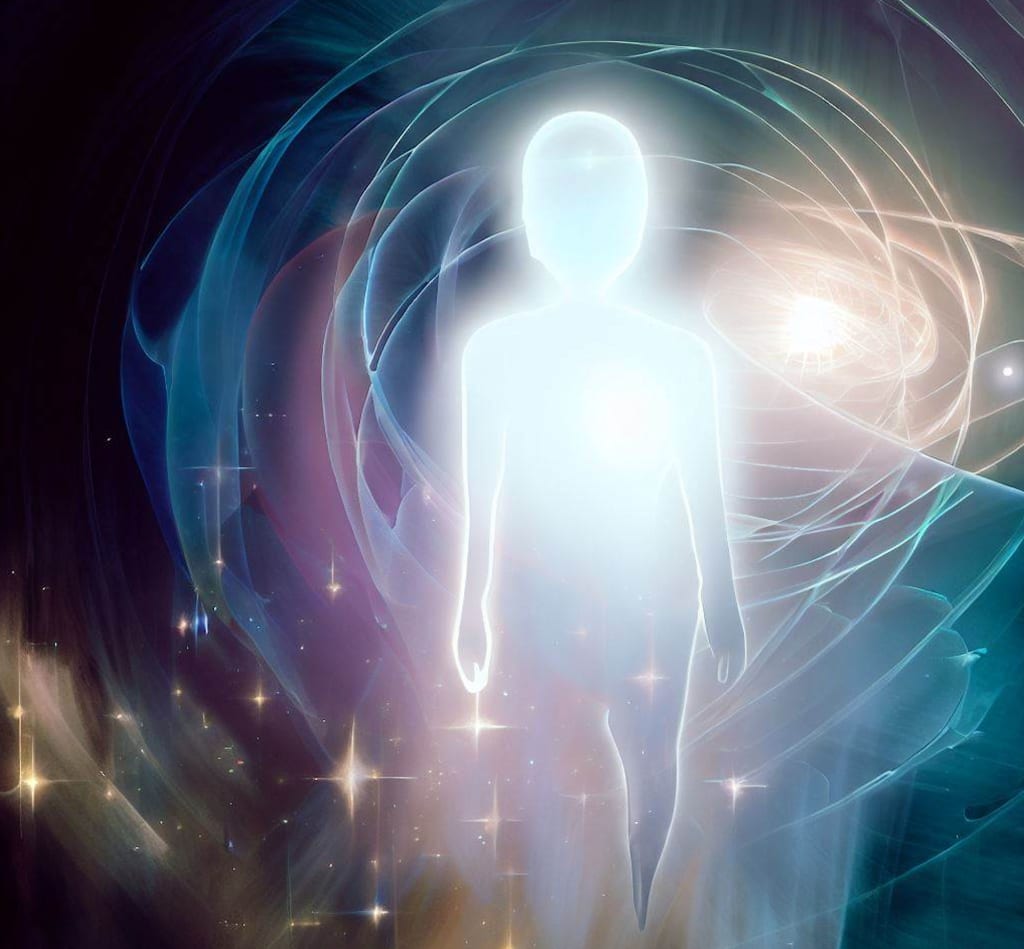
IV. The Quantum Model of the Human Being
To truly reimagine medicine through a quantum lens, we must first rethink what it means to be human. Traditional biomedicine sees us primarily as biochemical machines, defined by organs, tissues, and cells. The Quantum Doctor expands this view into a layered model of human existence, where health and disease emerge not only from molecular processes but from the interplay of energy, mind, intuition, and consciousness. In this holistic framework, each layer influences the others, and illness often begins in the subtler realms before crystallizing in the body.
The Five Interconnected Layers
- Physical Body – The Realm of Biochemistry and Modern Medicine
This is the most familiar layer: the body of flesh, bone, and blood. Modern medicine excels here, diagnosing and treating physical dysfunctions with remarkable precision. Yet the physical body is only the outermost expression of a deeper architecture. - Vital Body – The Energy Flows of Life
Known as prana in Ayurveda or qi in Chinese medicine, this layer represents the subtle energy currents that sustain vitality. Acupuncture, yoga, breathwork, and martial arts all work at this level, seeking to balance energy flows along channels or meridians. Disruptions here—stagnation, deficiency, or imbalance—can precede physical disease by years. - Mental Body – Thoughts, Emotions, and Psychological States
The mental layer governs patterns of thinking and emotional responses. Chronic stress, unresolved trauma, and habitual negativity act like toxins at this level, eroding resilience and setting the stage for physical breakdown. Psychotherapy, mindfulness, and emotional healing practices operate primarily here. - Intuitive or Supramental Body – Creativity and Transpersonal Insights
This is the seat of archetypes, inspiration, and higher intelligence. When activated, it allows us to access creativity and wisdom beyond rational analysis. Artists, visionaries, and mystics often draw from this layer. In health, tapping the intuitive body can spark breakthroughs in healing, often manifesting as sudden clarity, life-changing decisions, or even spontaneous remission. - Consciousness – The Ground of Being
At the deepest level lies consciousness itself: the field from which all the other layers arise. Here resides the ultimate healing potential. Consciousness is not bound by space or time; it holds the possibility of transformation and alignment. Practices like deep meditation, prayer, and contemplative silence connect us with this foundational reality.
How Disease Manifests Across Layers
One of the most radical claims of the Quantum Doctor is that disease begins in subtle realms long before it appears in the body. By the time symptoms surface, the imbalance has already cascaded through multiple layers.
- Physical symptoms as late signals: Headaches, digestive issues, or chronic pain may represent years of neglected stress or energy imbalance. Treating the symptom without addressing the cause is like fixing cracks in a wall without repairing the shifting foundation.
- Case illustration – stress cascade:
- A corporate professional faces relentless deadlines (mental body imbalance: anxiety, fear).
- This stress constricts the flow of energy, disturbing the vital body.
- Over time, the physical body responds with hypertension, ulcers, or a weakened immune system.
- Without deeper healing, medication may suppress symptoms, but the root disturbance persists.
Closing Thought of Section
This layered model reframes illness not as a sudden failure but as the end-point of a long journey of imbalance across consciousness, intuition, mind, and energy. It suggests that true healing must work across all levels—strengthening the body, balancing energy, reshaping thought patterns, unlocking creativity, and reconnecting with consciousness. In this sense, every patient carries not only a diagnosis but also a hidden map to transformation.

V. Integrative Medicine through the Quantum Doctor Lens
If the earlier sections set the stage for crisis and paradigm shift, this section enters the practical question: How do we actually practice medicine when quantum insights are taken seriously? The answer lies not in rejecting biomedicine or blindly embracing alternatives, but in weaving them into an integrative fabric that honors both objective science and subjective experience.
Allopathic Medicine
Modern biomedicine deserves recognition where it excels:
- Strengths: Few systems rival its precision in emergency care, surgery, and infectious disease management. Antibiotics, advanced imaging, organ transplants, and trauma response have extended life expectancy and reduced mortality from acute conditions dramatically.
- Limits: Yet, the same system falters with chronic, lifestyle-related, and psychosomatic conditions. It is often reductionist, focusing narrowly on biochemical pathways while neglecting the patient’s lived experience, consciousness, and psychosocial environment. Furthermore, its treatment model can inadvertently disempower patients, making them passive recipients of care rather than active participants in healing.
Alternative & Traditional Medicine
Parallel to the biomedical mainstream, ancient and alternative systems have thrived:
- Strengths: Ayurveda, Traditional Chinese Medicine (TCM), naturopathy, and energy-based practices emphasize holism, prevention, and alignment of body with mind and spirit. Their focus on lifestyle, diet, breath, and subtle energy flows offers a proactive and participatory path to health, often missed in allopathic approaches.
- Limits: However, these traditions face challenges of inconsistent standards, anecdotal reliance, and lack of scientific regulation. Their practices are sometimes dismissed as “pseudoscience” due to insufficient clinical validation, uneven practitioner quality, and, in some cases, exaggerated claims.
Quantum Integration Framework
The Quantum Doctor vision does not pit one against the other. Instead, it proposes a layered, consciousness-centered model where therapies can be sequenced, integrated, and harmonized:
- Consciousness as Primary Healer → Healing begins at the ground of being, through practices such as meditation, mindfulness, and self-awareness that reorient the patient to wholeness.
- Energy and Vital Flow → Therapies like acupuncture, pranayama, Reiki, and sound healing support the subtle body, aligning prana/chi with physical and emotional health.
- Mind and Emotion → Psychotherapy, cognitive reframing, art therapy, and affirmations address psychological imbalances that often precede physical disease.
- Body and Biochemistry → Pharmaceuticals, surgery, and nutritional science provide essential material interventions where necessary.
This hierarchy ensures that interventions at subtler levels amplify those at the gross physical level rather than compete with them. For instance:
- Meditation alongside chemotherapy → reducing stress, boosting immunity, improving outcomes.
- Acupuncture as adjunct to pain management → lowering dependency on opioids.
- Yoga and dietary shifts for diabetes → complementing medication while addressing root lifestyle causes.
Conclusion of Section
Integrative medicine, seen through the quantum lens, is not a compromise but a synthesis. It honors the strengths of biomedicine while incorporating the depth of alternative traditions, all framed within a consciousness-first worldview. In this vision, healing is not just about eradicating disease but about restoring balance across all levels of being—body, mind, energy, and spirit.

VI. Healing as Creative Quantum Choice
If illness is not merely a biochemical malfunction but an imbalance across layers of being, then healing must be understood as more than “fixing the machine.” Within the quantum paradigm, healing becomes an act of creative choice—an alignment of consciousness with health possibilities latent within the quantum field.
Illness as Blocked Potential
From this perspective, disease is not an accident nor a purely external invasion. It represents a stagnation of growth, a blockage of potential:
- Old patterns and limiting beliefs keep the mind looping in fear, anger, or helplessness.
- Toxic emotions lodge themselves in the vital body, creating stress, inflammation, and lowered immunity.
- Unresolved trauma shapes the neural and hormonal landscape, making the body predisposed to breakdown.
In other words, illness is the loud whisper of the soul urging transformation.
Role of Free Will and Intention
Quantum physics introduces the observer effect: outcomes at the quantum level depend on how they are observed. Applied to medicine, this suggests that conscious choice and intention matter.
- The act of choosing health possibilities—through intention, belief, and daily practices—can reconfigure the probabilities of recovery.
- Healing then becomes less about surrendering to fate and more about actively participating in one’s wellness journey.
Here, the patient is not merely a recipient of care but a co-creator of health.
Mechanisms of Quantum Healing
Skeptics often dismiss such ideas as wishful thinking, yet evidence from science provides bridges:
- Placebo Effect → Far from being “false medicine,” placebo demonstrates the power of belief and consciousness in producing measurable physiological change. Neuroimaging confirms that expectation can alter brain chemistry, reduce pain, and activate immune responses.
- Meditation and Mindfulness → Shown to reduce stress hormones, improve heart health, and enhance neuroplasticity.
- Visualization and Affirmation → Athletes, artists, and patients alike harness mental imagery to rewire performance and resilience.
- Prayer and Intention → Studies in distant healing, though controversial, hint at nonlocal influences consistent with quantum nonlocality.
These mechanisms represent tools for collapsing healthier possibilities into reality—not magic, but disciplined practices that engage consciousness as healer.
Creativity in Healing
Healing is ultimately an act of creativity. Just as artists birth new forms from the void, patients can reimagine their lives through illness:
- Many radical remissions documented in medical literature involve creative breakthroughs—dietary transformation, deep forgiveness, community engagement, or spiritual awakening.
- Illness can become the crucible for reinvention, a doorway into authenticity and higher purpose.
- Examples abound: individuals reversing advanced cancers after embracing meditation and lifestyle change; patients with autoimmune conditions achieving remission through nutrition and inner work; or those with depression transforming through art and service.
Conclusion of Section
Healing as creative quantum choice reframes disease from a curse into a call to growth. It asks the patient not only to take medicine but to take authorship of their consciousness. In this light, every act of awareness, intention, and creativity is a step toward realigning with the infinite health potentials available in the quantum field.
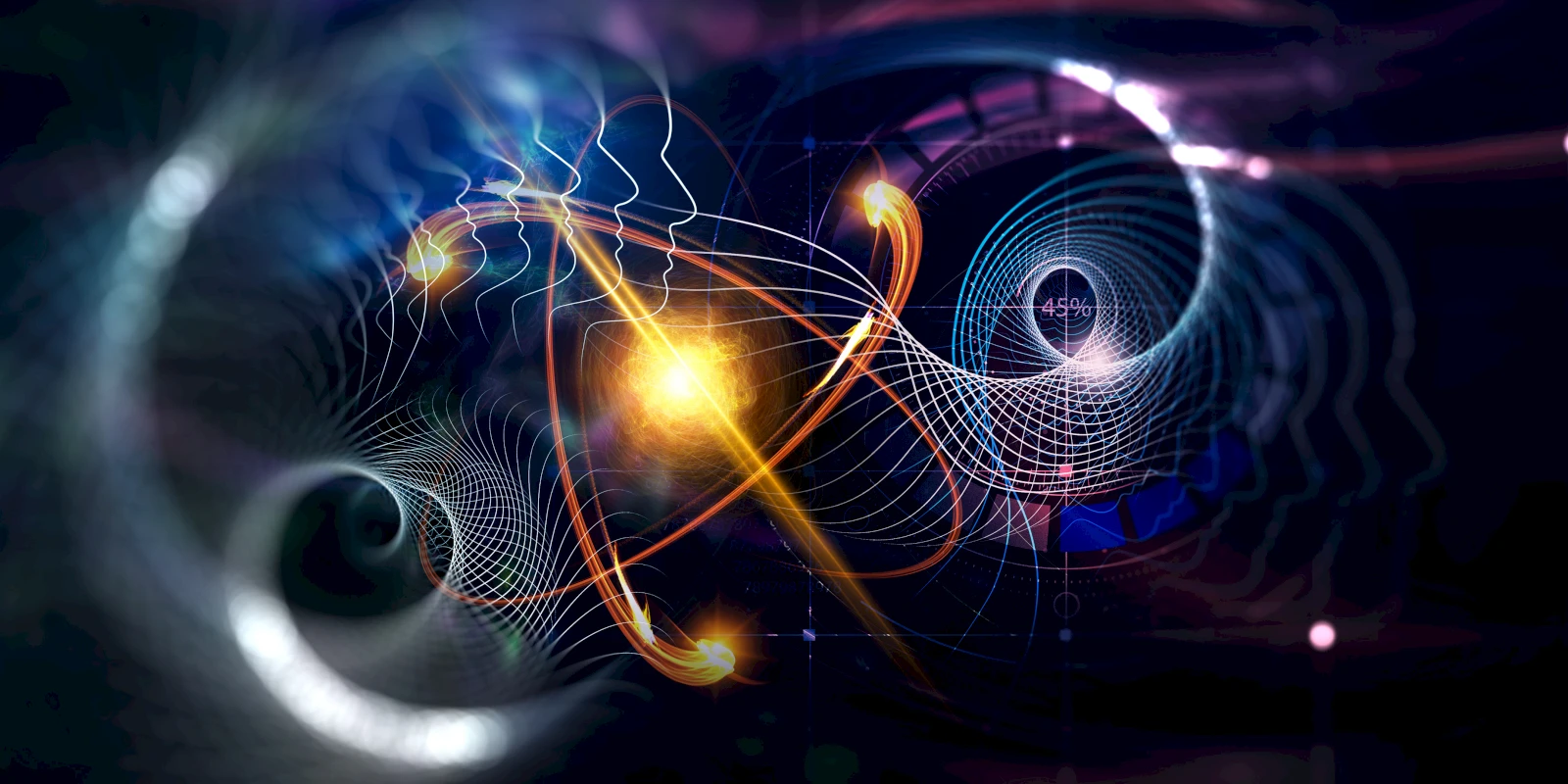
VII. Practical Applications for Individuals
A paradigm remains abstract unless it translates into daily practices that empower individuals to embody the principles of healing. The vision of the Quantum Doctor is not reserved for clinics and researchers; it begins with ordinary choices each person can make to align body, mind, and consciousness.
Daily Practices
- Meditation and Mindfulness for Inner Awareness
- Establishing a daily meditation practice anchors the mind in the present moment, reduces stress hormones, and strengthens the connection between consciousness and physiology.
- Even 10–20 minutes of mindfulness meditation has been shown to alter brain networks involved in attention and emotional regulation.
- For the quantum healer, meditation is not escapism but the primary tool of observation and choice—a way to “collapse” healthier realities.
- Breathwork and Yoga for Vital Energy Balance
- Breath is the bridge between the physical and vital bodies. Practices like pranayama, diaphragmatic breathing, and coherent breathing restore energy flows and harmonize the autonomic nervous system.
- Yoga integrates breath, posture, and awareness, cultivating resilience, flexibility, and subtle energy alignment. From a quantum view, it balances the wave (energy) and particle (matter) dimensions of being.
- Conscious Nutrition: Food as Vibrational Medicine
- Beyond calories and macronutrients, food carries vibrational quality that influences consciousness. Fresh, plant-based, sattvic (pure) foods are said to enhance clarity and prana.
- Modern nutritional science supports the value of anti-inflammatory diets, microbiome diversity, and mindful eating.
- The act of blessing or consciously preparing food may itself be a quantum act of imprinting intention into nourishment.
Emotional Mastery
- Healing Trauma through Conscious Awareness
- Trauma unresolved in the mental body often re-emerges as physical illness. Practices like somatic experiencing, journaling, or guided visualization can bring unconscious wounds to awareness, releasing blocked energy.
- Neuroscience supports this: integrating traumatic memories reduces stress reactivity and rewires neural pathways for resilience.
- Role of Forgiveness and Compassion in Immunity
- Forgiveness is not weakness but a release of toxic emotional charge. Studies show forgiveness practices lower blood pressure, improve heart rate variability, and strengthen immune response.
- Compassion—toward self and others—elevates oxytocin and dopamine, reinforcing both psychological well-being and immune health. In the quantum lens, compassion shifts the observer state, aligning one with higher health possibilities.
Expanding Healing Beyond Self
Healing is not confined to the individual—it radiates into relationships, families, and communities:
- Family Systems: Patterns of illness and trauma often repeat across generations. Conscious awareness and forgiveness can break cycles of suffering, freeing descendants from inherited emotional burdens.
- Collective Consciousness: Practices such as group meditation, collective prayer, or community service generate measurable coherence in communities, aligning individual health with societal well-being.
- Social Healing: True health requires environments that nurture—clean air, equitable systems, and compassionate governance. Individual healing naturally inspires social responsibility and planetary care, creating feedback loops of well-being.
Conclusion of Section
The quantum approach to medicine becomes real when it is lived daily. Through meditation, breath, conscious nutrition, emotional mastery, and compassion, individuals can not only transform their own health but also ripple healing outward into families, societies, and ecosystems. Healing, in this paradigm, is contagious in the best sense—a spark of wholeness that lights up others.
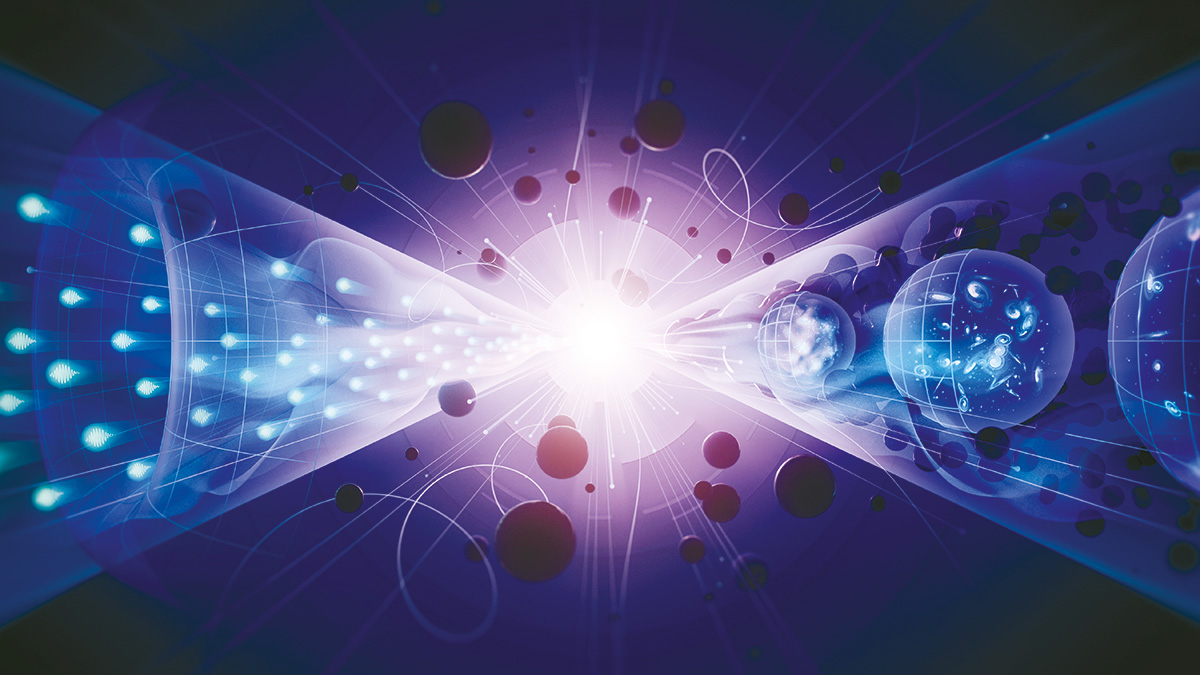
VIII. Practical Applications for Practitioners
The Quantum Doctor paradigm is not merely an intellectual curiosity—it calls for a radical reorientation of medical practice itself. For practitioners, whether physicians, therapists, or healers, the challenge is to bridge modern biomedical rigor with consciousness-centered care.
Redefining the Doctor–Patient Relationship
- From Authority to Facilitator: The conventional model often places doctors as all-knowing authorities, with patients as passive recipients of treatment. The quantum approach reframes the physician as a facilitator of empowerment, guiding patients to activate their inner healer.
- Partnership Model: This involves listening deeply, honoring subjective experiences, and co-creating healing strategies. The doctor becomes less of a mechanic fixing a broken machine and more of a gardener tending potential—cultivating conditions in which healing can unfold.
- Empathy and Presence: Research shows that the physician’s presence and empathy significantly influence outcomes, a finding consistent with the observer effect in quantum physics.
Diagnostic Approaches
In a quantum-integrative framework, diagnosis must move beyond physical symptoms to address all layers of being:
- Physical Assessment: Retaining the strengths of lab tests, imaging, and clinical examination.
- Energy Scans: Incorporating methods such as biofield assessment, heart rate variability analysis, or traditional pulse/meridian readings to evaluate subtle imbalances.
- Consciousness Mapping: Using tools like guided dialogue, mindfulness questionnaires, or archetypal psychology to uncover emotional and spiritual roots of illness.
- Together, these create a multi-layered diagnostic picture—body, energy, mind, and consciousness.
Therapeutic Strategies
Healing strategies must also embrace both breadth and depth:
- Blending Western Diagnostics with Eastern Therapies
- A cancer patient may benefit from MRI imaging and targeted chemotherapy, while also practicing yoga, acupuncture, or energy healing to reduce side effects and improve resilience.
- A patient with autoimmune disease may combine immunosuppressants with dietary shifts, meditation, and trauma-release therapies.
- Designing Integrative Treatment Protocols
- The practitioner orchestrates care across modalities, sequencing interventions according to the hierarchy of healing (Consciousness → Energy → Mind → Body).
- Example: In treating chronic pain, begin with mindfulness and breathwork to calm the nervous system, add acupuncture for energy balance, and use physical therapy or medication as needed.
- Another example: For depression, integrate psychotherapy and pharmacology with meditation, journaling, community engagement, and spiritual practices.
- Case Studies as Proof of Concept
- Documented cases of radical remission highlight patients who engaged multiple dimensions of healing.
- Clinics experimenting with integrative oncology or functional medicine show how protocols combining lifestyle, counseling, and conventional medicine often achieve better long-term outcomes.
Conclusion of Section
For practitioners, adopting the quantum lens means expanding medicine’s canvas—from fixing symptoms to cultivating wholeness, from authority to partnership, from fragmented protocols to layered synthesis. It is both a return to ancient healing wisdom and a step forward into a science of consciousness that could redefine the future of healthcare.
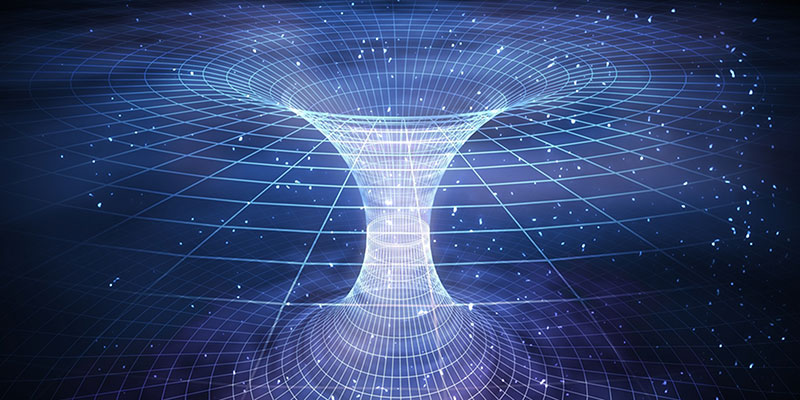
IX. Critiques and Controversies
No paradigm shift in science or medicine has ever unfolded without turbulence. The vision of the Quantum Doctor, while inspiring, sits at the crossroads of enthusiasm and skepticism. To take it seriously, one must acknowledge its critics as well as its promise.
Scientific Objections
- Misuse of Quantum Terminology: Many physicists argue that terms such as wave–particle duality, nonlocality, and observer effect are often used metaphorically in medicine, far removed from their precise mathematical meaning in quantum mechanics. To them, “quantum healing” risks becoming new-age jargon cloaked in scientific language.
- Lack of Reproducible Evidence: Medicine rests on controlled trials and reproducibility. While anecdotal healings and small studies abound, critics emphasize that rigorous, large-scale, peer-reviewed evidence for quantum healing mechanisms is still sparse. Without this, mainstream acceptance remains limited.
Dangers of Misinterpretation
- Pseudoscience: In the wrong hands, quantum language can be co-opted into unfounded claims, leading patients away from life-saving treatments.
- Exploitation of Vulnerable Patients: Those battling chronic or terminal illness are particularly susceptible to promises of miraculous cures. Unregulated practitioners or commercial interests can misuse the paradigm to profit from desperation, eroding trust in genuine integrative approaches.
Counterarguments
- Placebo as Scientific Validation: Even skeptics cannot deny the placebo effect—clear evidence that belief, expectation, and consciousness can trigger measurable healing responses. Placebo is not “fake medicine”; it is proof of mind–body causation that aligns with quantum perspectives.
- Emerging Disciplines as Bridges: Fields like psychoneuroimmunology (mind–immune connection), epigenetics (environment and consciousness influencing gene expression), and biofield science (study of subtle energy fields) are expanding medicine’s boundaries. They offer empirical footholds where consciousness and biology intersect, echoing quantum insights.
Balanced View
A healthy skepticism is not an obstacle but a safeguard. The task is not to dismiss quantum healing as fantasy nor to accept it uncritically. Progress requires:
- Rigorous research into consciousness, biofields, and integrative therapies.
- Ethical guidelines to protect patients from exploitation.
- Collaborative dialogue between physicists, clinicians, and alternative healers.
In this way, the quantum paradigm may evolve into a science of wholeness—not by abandoning rigor, but by expanding it to include consciousness as a legitimate dimension of inquiry.

X. The Future of Medicine: A Consciousness-Centered Revolution
If medicine is to truly evolve, it must expand its definition of health beyond “absence of disease.” The quantum paradigm suggests that the future of healthcare lies in consciousness-centered healing—an approach that recognizes the body as matter, energy, mind, and spirit intertwined. This is not simply a new technique; it is a revolution in how we understand life, suffering, and the role of medicine itself.
From Curing to Healing: Medicine as Growth of the Soul
- Traditional biomedicine seeks to cure, often by removing symptoms or controlling disease.
- Quantum medicine redefines health as healing—an evolutionary process where illness becomes an opportunity for transformation, awakening, and alignment with higher purpose.
- The physician of the future will not just fix broken parts but will guide patients in soul growth: fostering resilience, meaning, and wholeness.
Personalized & Preventive Healthcare
The consciousness-centered model naturally emphasizes prevention and personalization:
- Lifestyle Design: Daily habits of diet, sleep, exercise, and mindfulness crafted to fit individual constitutions (drawing from Ayurveda, TCM, and modern functional medicine).
- Emotional Literacy: Cultivating awareness of emotions, stress, and trauma patterns as early markers of disease.
- Spiritual Practice: Meditation, prayer, contemplation, or creative expression as routine healthcare—not “extras,” but essential medicine for aligning consciousness and biology.
Role of Technology & AI
While consciousness is primary, technology will remain a powerful ally:
- Quantum Computing: May help model complex mind–body interactions and subtle energy dynamics beyond the capacity of current systems.
- Bioinformatics & Predictive Analytics: Personalized genomics, microbiome analysis, and AI-driven diagnostics will offer precision medicine tailored to individual needs.
- Consciousness Research Tools: Neuroimaging, biofield mapping, and brain–computer interfaces could provide empirical windows into states of consciousness, bridging subjective and objective domains.
Collective Implications
The revolution will not be complete until it reshapes society at large:
- Healthcare Policy Reform: Policies must shift from a profit-driven, illness-management industry to integrative, preventive care systems accessible to all. Insurance models will need to cover mindfulness programs as readily as surgeries.
- Education of Practitioners: Medical schools of the future must train physicians in consciousness-based healing, emotional intelligence, and cross-disciplinary wisdom alongside biochemistry and anatomy.
- Bridging Indigenous Knowledge with Modern Science: Ancient healing systems such as Ayurveda, Unani, TCM, and shamanic practices must be studied with scientific openness and humility. Their wisdom can complement modern discoveries, creating a truly global medicine.
Conclusion of Section
The medicine of tomorrow will not emerge from rejecting science, nor from clinging to outdated reductionism. It will arise from a synthesis of science and spirit, technology and tradition, objectivity and subjectivity. This consciousness-centered revolution in healthcare envisions a world where healing is not just survival but awakening—where medicine serves not only the body, but also the growth of the soul and the flourishing of humanity.
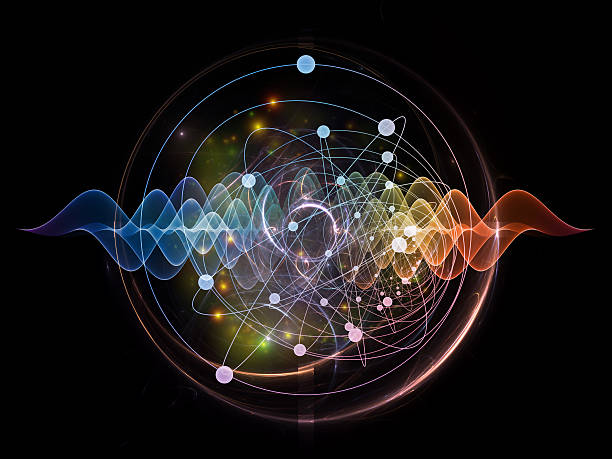
XI. Conclusion: Awakening the Quantum Doctor Within
At the heart of this journey lies a profound insight: every human being carries an inner quantum doctor. This is not an external authority but the innate capacity of consciousness to heal, transform, and realign life with wholeness. Medicine, in its deepest sense, is not only about managing disease—it is about awakening this potential within.
Key Insight
The quantum doctor within is the voice of balance, wisdom, and creativity. It reminds us that healing is not only recovery from physical symptoms but also a process of self-realization and transformation. Illness can thus be understood not as a failure of biology, but as an invitation to growth, meaning, and deeper connection with the self and the cosmos.
Call to Action
The future of medicine calls upon all levels of society to participate in this transformation:
- Individuals → Embrace daily practices—meditation, conscious nutrition, breathwork, forgiveness—that harmonize mind, body, and spirit. Healing begins with choice and intention.
- Practitioners → Move from mechanistic treatment toward facilitation of holistic healing. Redefine the doctor–patient relationship as a partnership where patients are empowered co-creators of their health.
- Society → Invest in a healthcare system that supports integrative medicine, consciousness research, and preventive care. Policy, funding, and education must evolve to honor wholeness, not just symptom suppression.
Participate and Donate to MEDA Foundation
The MEDA Foundation embodies this spirit of transformation by supporting holistic healing, autism empowerment, and sustainable self-reliance for communities. By participating, donating, and spreading awareness, you can help extend the vision of the quantum doctor beyond individuals to society at large, creating ecosystems where healing and growth are accessible to all.
Healing is not a privilege—it is a birthright. Together, we can create a future where medicine is a path not only to survival, but to awakening.
Book References
- Amit Goswami – The Quantum Doctor: A Physicist’s Guide to Health and Healing
- Amit Goswami – The Self-Aware Universe
- Bruce Lipton – The Biology of Belief
- Deepak Chopra – Quantum Healing
- Larry Dossey – Healing Words
- Candace Pert – Molecules of Emotion








